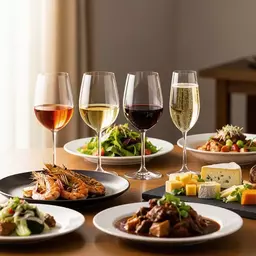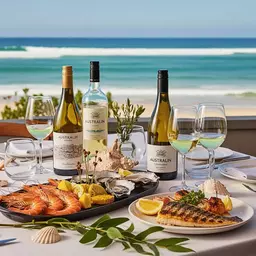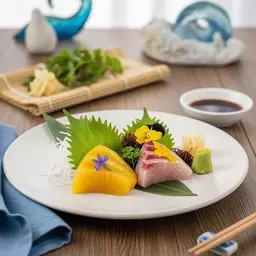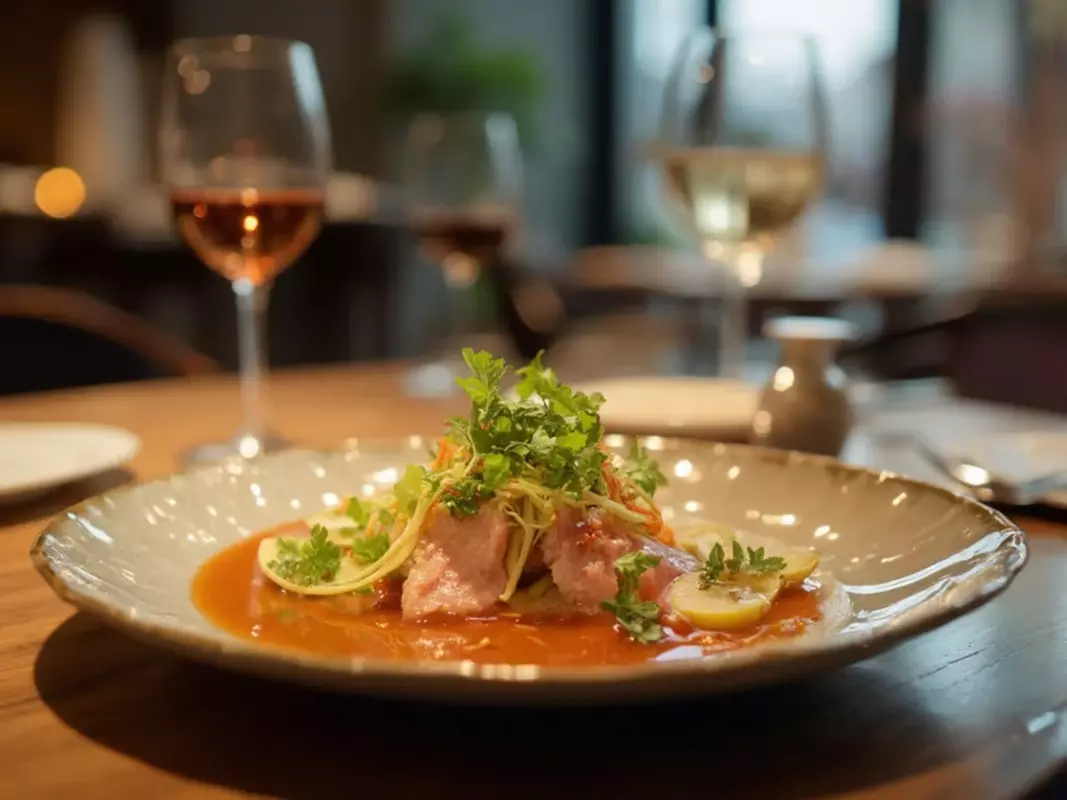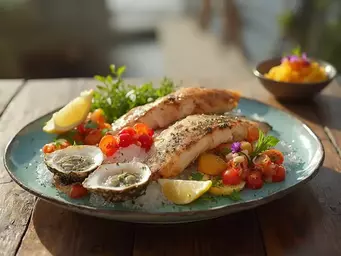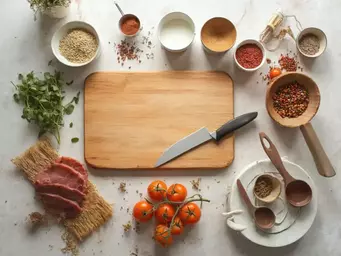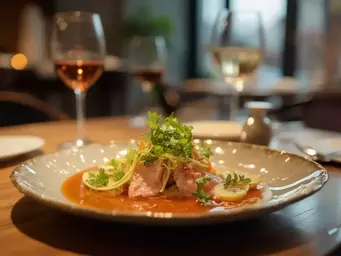Wine Pairings for Modern Australian Cuisine
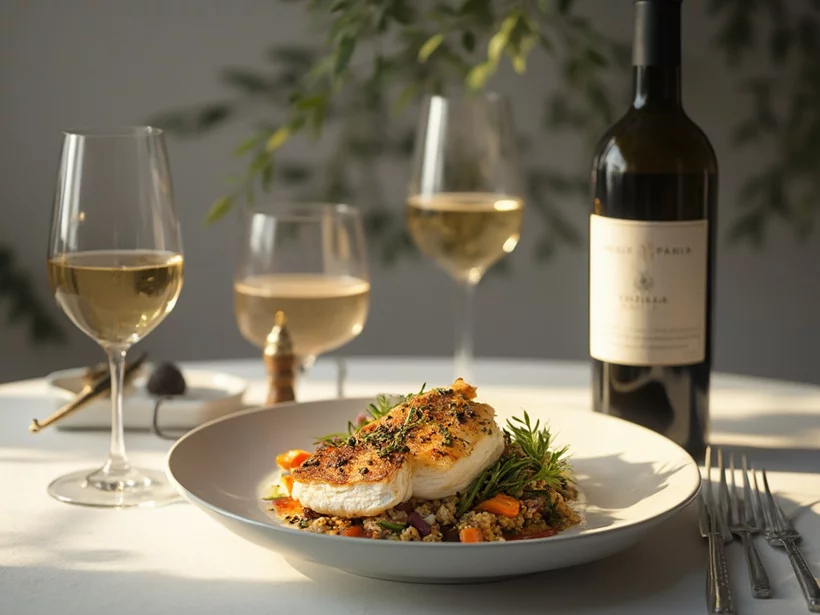
Have you ever considered how a simple meal can transform into an unforgettable experience? The key lies in the art of pairing. This exploration of modern Australian cuisine and its wine pairings reveals how diverse ingredients and thoughtful combinations can elevate your dining encounters.
What You Will Learn
- The essence of modern Australian cuisine relies on fresh, local ingredients and multicultural influences.
- Sustainability is key—focus on local sourcing and sustainable seafood practices.
- Wine pairing enhances dining experiences, creating harmony between food and drink.
- Understanding flavor and texture matching can elevate your meal to new heights.
- Australia's diverse wine regions each offer unique varietals that complement various cuisines.
- Experimenting at home with wine pairings can lead to delightful culinary discoveries.
- Engaging with local producers and fine dining can deepen your appreciation for Australian culinary heritage.
Defining Modern Australian Cuisine & Wine Pairing Impact
Modern Australian cuisine is a dynamic fusion of local produce, global influences, and sustainable practices. Wine, far from being a mere beverage, acts as a crucial partner, elevating the dining experience by harmonizing flavors and textures. The visual below illustrates the core elements that define this cuisine and the significant role of wine pairing in enhancing it.
Defining Modern Australian Cuisine
-
Fresh & Seasonal Ingredients
-
Global Culinary Influences
-
Sustainability & Local Sourcing
-
Innovation & Experimentation
Wine's Role in Culinary Experience
-
Enhances Flavor Harmony
-
Complements Texture Matching
-
Optimizes Temperature & Serving
-
Transforms Simple Meals
Key Australian Wine Regions
-
Barossa Valley (Shiraz, Reds)
-
Margaret River (Chardonnay, Cab Sauvignon)
-
Hunter Valley (Semillon, Whites)
-
Tasmania (Sparkling, Cool-Climate)
Tips for Home Wine Pairing
-
Start Simple: Pair what you enjoy
-
Match Acidity of Food & Wine
-
Consider Weight: Light with Light
-
Don't Be Afraid to Mix & Experiment
Understanding the Essence of Modern Australian Cuisine and Wine Pairing
Modern Australian cuisine is a vibrant blend of influences, embracing the diverse cultural tapestry of our nation. At The Yellow Tail Table, we celebrate this unique culinary identity by highlighting local produce and innovative cooking techniques. Have you ever wondered what truly defines this tantalizing cuisine? It’s all about freshness, seasonality, and a respectful nod to our rich food heritage!
- Fresh Ingredients: Drawing inspiration from Australia’s diverse landscapes, from coastal areas to fertile farmlands.
- Global Influences: Incorporating flavors and techniques from culinary traditions around the world.
- Sustainability: Emphasizing sustainable seafood practices and local sourcing.
This harmonious approach not only shapes our plates but also creates a beautiful canvas for exceptional wine pairings that elevate the dining experience.
What Defines Modern Australian Cuisine?
At its core, modern Australian cuisine reflects our commitment to using fresh, local ingredients while celebrating the multicultural influences that enrich our palates. It’s about creating dishes that tell a story, often inspired by the landscapes and the people of Australia. Imagine savoring a dish of barramundi paired with a zesty lemon myrtle sauce. It’s a perfect example of how we honor our native ingredients and traditions!
- Seasonal Focus: Dishes are designed around what’s fresh and in season.
- Ingredient Integrity: Respecting the natural flavors of local produce.
- Innovation: Chefs are encouraged to explore and experiment, creating unexpected flavor combinations.
This dynamic nature allows for an endless exploration of tastes, making each meal an exciting journey through our culinary landscape.
The Role of Wine in Enhancing Culinary Experiences
Wine is not just a beverage; it’s a crucial partner in the dining experience. It has the power to enhance flavors, cleanse the palate, and bring dishes to life. As I navigate the world of Australian cuisine, I've found that understanding wine pairing can be an art form! It’s all about finding the right balance between the food and the wine to create a memorable experience.
- Flavor Harmony: Selecting wines that complement or contrast the flavors in your dish.
- Texture Matching: Pairing the body of the wine with the richness of the food.
- Temperature and Serving: Ensuring wines are served at the optimal temperature to enhance their flavors.
When done right, wine can transform a simple meal into a culinary masterpiece, inviting you to savor every bite and sip. Research highlights the complex sensory interaction between food and wine, explaining how different characteristics like aroma, taste, and texture combine to create a holistic experience. Understanding these interactions is key to mastering the art of pairing, ensuring that each component elevates the other for an unforgettable dining experience.
Key Wine Regions Contributing to Modern Australian Cuisine
Australia’s wine regions are as diverse as its cuisine, each contributing unique varietals and flavor profiles that elevate our dining experiences. From the sun-soaked vineyards of the Barossa Valley to the cool-climate regions of Tasmania, there’s so much to explore! After all, the right wine can perfectly mirror the essence of a dish, enhancing its flavors and inviting new sensations. For those interested in a deeper dive, the University of Adelaide library offers extensive resources on Australian wine and viticulture.
- Barossa Valley: Known for its robust Shiraz and bold reds.
- Margaret River: Famous for its Chardonnay and Cabernet Sauvignon.
- Hunter Valley: Renowned for its Semillon and light-bodied whites.
- Tasmania: Emerging for its sparkling wines and cool-climate varietals.
Each of these regions brings a distinct character to our table, making wine pairing an exciting adventure in every meal!
Frequently Asked Questions about Modern Australian Cuisine and Wine Pairing
What defines Modern Australian Cuisine?
Modern Australian cuisine is characterized by its dynamic fusion of fresh, seasonal, local ingredients, global culinary influences, and a strong emphasis on sustainability and local sourcing. It champions innovation and experimentation in cooking.
How does wine enhance the dining experience in Modern Australian Cuisine?
Wine acts as a crucial partner by enhancing flavor harmony, complementing texture matching, and optimizing temperature and serving. When thoughtfully paired, wine can transform simple meals into memorable culinary experiences.
Which Australian wine regions are highlighted for their contributions?
Key regions include the Barossa Valley (known for Shiraz and bold reds), Margaret River (Chardonnay, Cabernet Sauvignon), Hunter Valley (Semillon, light whites), and Tasmania (sparkling and cool-climate varietals).
What are some tips for experimenting with wine pairings at home?
Start simple by pairing wines you already enjoy with favorite dishes. Match the acidity of the food with a similarly acidic wine, consider the weight of the food and wine (light with light), and don't be afraid to mix and experiment with new combinations.
Why is sustainability important in Modern Australian Cuisine?
Sustainability is key to Modern Australian Cuisine, focusing on practices like local sourcing and sustainable seafood. This ensures fresh, high-quality ingredients while supporting local economies and protecting the environment.
Pro Tip
Did you know? Pairing wines with Australian dishes can enhance your dining experience by elevating the flavors. For example, a light and crisp Sauvignon Blanc complements seafood beautifully, while a rich Shiraz can stand up to hearty meats. Don't hesitate to experiment with different combinations to discover your perfect match!
Summing Up the Journey of Wine Pairing in Modern Australian Cuisine
As we explore the vibrant world of modern Australian cuisine, it's essential to recognize that wine pairing is not just an art—it's a delightful adventure. From the rich, bold flavors of Shiraz to the crispness of Sauvignon Blanc, each varietal opens up a myriad of possibilities that complement our local ingredients. So, why not take a leap and start experimenting with your own pairings at home? Your kitchen is a canvas, and the right bottle can transform even the simplest meal into a culinary masterpiece!
At The Yellow Tail Table, we encourage you to play with different flavor combinations. Try matching a spicy Thai dish with a Riesling or enjoying a creamy pasta with a chilled Chardonnay. The key is to let your palate guide you and explore new textures and tastes. Remember, there are no strict rules—just your unique preferences and the joy of discovery!
Encouragement to Experiment with Pairings at Home
Wine pairing can seem intimidating, but it really is about enhancing your dining experience. Here’s a quick list of tips to help you get started on your own wine pairing journey:
- Start Simple: Pair wines that you already enjoy with your favorite dishes.
- Think About Acidity: Match the acidity of the food with a similarly acidic wine for balance.
- Consider Weight: Light dishes go well with lighter wines, while richer dishes can handle bold varietals.
- Don’t Be Afraid to Mix: Try combinations you wouldn’t normally consider; the surprise may delight your taste buds!
As you experiment, reflect on your experiences! What new pairings surprised you? Sharing these insights can make the culinary journey even more enjoyable, fostering connections with family and friends over shared meals.
Connecting with Local Producers and Fine Dining Experiences
Another fantastic way to enrich your wine pairing knowledge is by connecting with local producers and dining establishments. Australia boasts a wealth of unique vineyards and culinary venues that showcase the best of our region. Here are a few ideas to immerse yourself in the culinary culture:
- Visit a Local Winery: Many wineries offer tasting experiences that include food pairings, allowing you to learn directly from the experts.
- Attend Food and Wine Festivals: These events are perfect for discovering new tastes and meeting local producers.
- Try Fine Dining Restaurants: Explore restaurants renowned for their curated wine lists and innovative pairings with seasonal dishes.
- Engage with Farmers' Markets: Connect with local vendors and chefs to explore fresh produce that inspires your next meal.
Engaging with the local food community not only enhances your understanding of wine pairing but also supports sustainable practices and celebrates the rich tapestry of Australian culinary heritage. So, what will your next pairing adventure be? I can't wait to hear about your experiences!
Recap of Key Points
Here is a quick recap of the important points discussed in the article:
- Fresh Ingredients: Emphasize the use of local and seasonal produce to create vibrant dishes.
- Global Influences: Incorporate a variety of culinary traditions to enhance flavor profiles.
- Sustainability: Focus on sustainable practices, especially in sourcing seafood.
- Wine Pairing: Understand the importance of matching wine flavors with dishes to elevate the dining experience.
- Experimentation: Encourage personal experimentation with wine pairings to discover unique combinations.
- Engagement with Local Producers: Connect with local wineries and markets to deepen your culinary knowledge.
